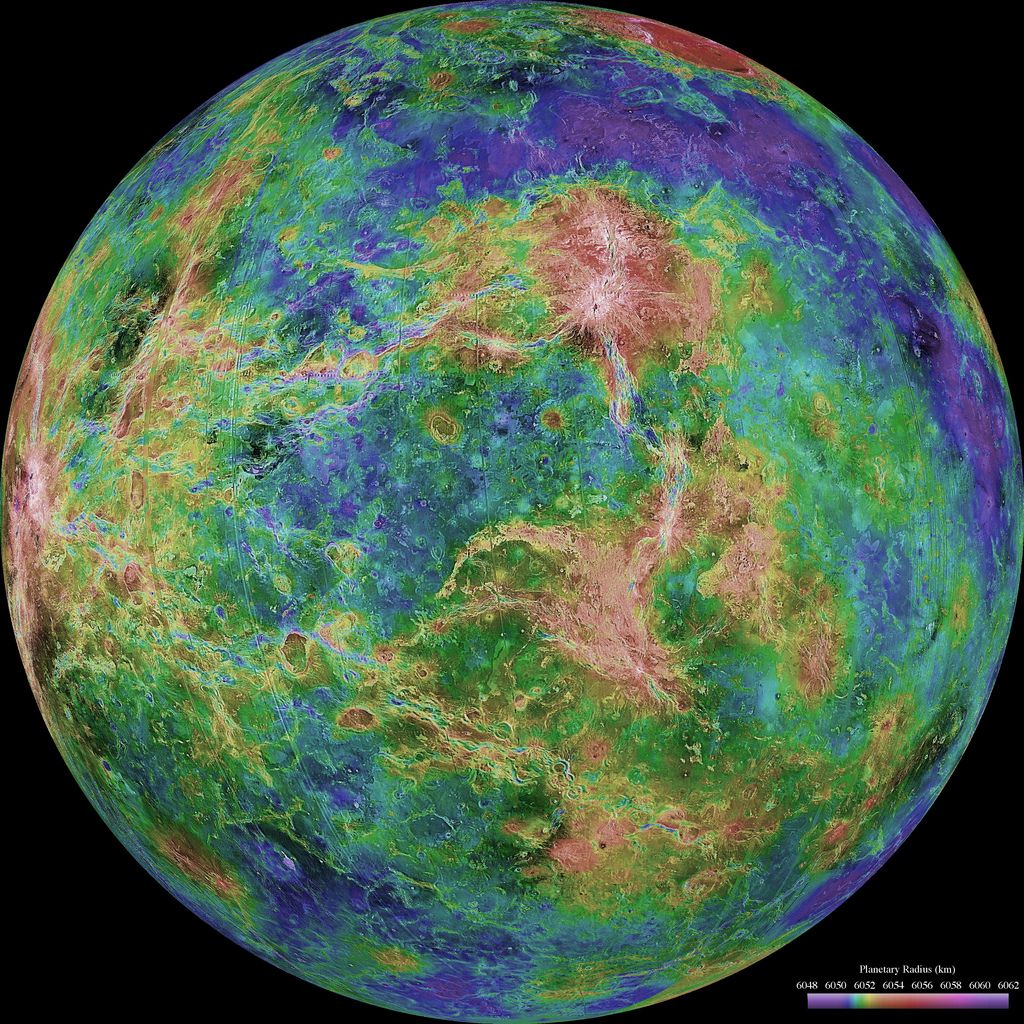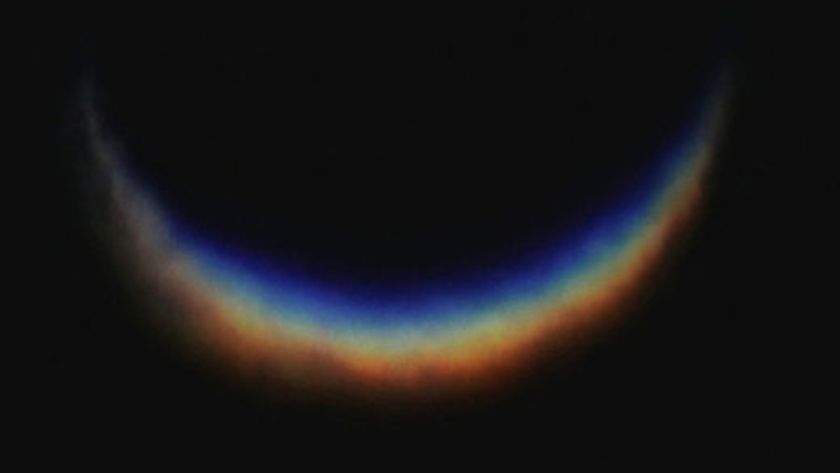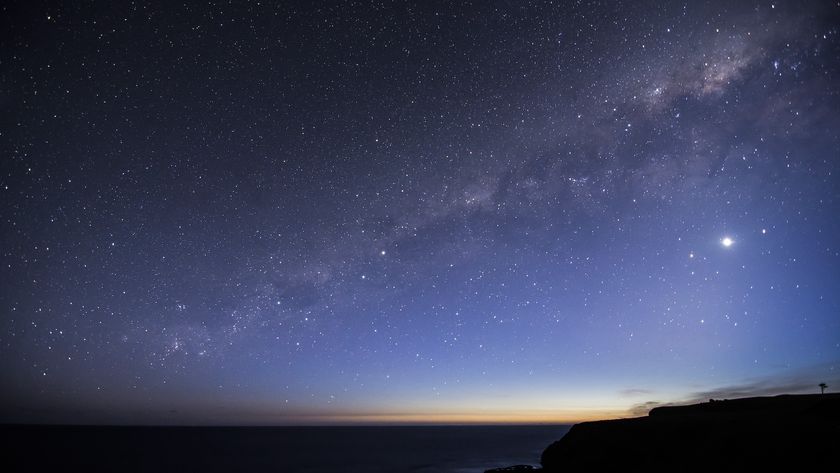Transit Trivia: 5 Odd Facts About Venus

Venus is in the spotlight Tuesday (June 5) as it makes a rare pass across the face of the sun. The transit of Venus occurs in pairs more than a century apart. The last Venus transit happened in 2004, making this week's event the last opportunity to see the planet silhouetted on the sun until 2117. With Venus enjoying its 15 minutes of fame (or more accurately, about six hours and 50 minutes), here are five fun facts about our planetary next-door neighbor. 1. It's often mistaken for a UFO Venus is one of the brightest objects in the night sky, and its pointlike brilliance makes it a prime candidate for misidentification. According to the online Museum of Unnatural Mystery, Venus is the natural object most likely to be mistaken for an unidentified flying object, or UFO. Even former president Jimmy Carter may have made this mistake. In 1969, before he became governor of Georgia, Carter reported seeing a bright white ball about the size of the moon that changed colors and then seemed to retreat in the night sky above Leary, Ga. Though he never believed the UFO was an alien spacecraft, Carter couldn't explain what he was seeing. Later analysis by ufologists and skeptics suggest that Venus was at its brightest in the area of the sky Carter reported seeing. Atmospheric effects could explain the planet’s seeming ability to move and shift colors. [UFO Quiz: What's Really Out There] 2. It's Earth's hot twin Venus is about the same size as Earth, and similar in structure. But the two planets couldn't be any more different, especially when it comes to livability. Venus rotates so slowly that a day on the planet lasts 117 Earth days. Because of this slow rotation, Venus' iron core can't generate a strong magnetic field like the one that protects Earth from cosmic radiation. Not that a magnetic field would improve the real estate: Venus'’ surface temperatures reach more than 880 degrees Fahrenheit (471 degrees Celsius), and the atmosphere is an unappealing mixture of carbon dioxide and sulfuric acid clouds. The European Venus Express orbiter has observed lightning bursting in these corrosive clouds. 3. Its features are feminine The second brightest object in the night sky, Venus was named after the goddess of love and beauty. Keeping with its feminine mystique, the International Astronomical Union (the governing body for naming planets and satellites) decided the orb's topographic features would be named after both real and mythological ladies from across the globe. The only man on Venus? James Clerk Maxwell whose name was given to the highest region on Venus, Maxwell Montes. The argument for keeping his name on a Venus landmark was the fact that he formalized the mathematics of principles that made radar observations of the planet possible. Such observations revealed the size, rotation and some major features hidden by the veil of thick, swirling clouds. Some of the female names include: Devana Chasma (canyons), named for the Czechoslovakian goddess of hunting; Chondi Chasma, named for the Bengali goddess of wild animals; and Copacati Mons (mountain), named after the Inca lake goddess. The irregularly shaped craters, called patera, were named after famous women, including Bers Patera (named for Leo Tolstoy's wife Sofya Andreyevna Bers) and Keller Patera (named for blind and deaf American writer Helen Keller). [Gallery: Sun Gods and Goddesses] 4. Egyptians believed in two Venuses Because Venus reaches its brightest moments right after sunset and just before dawn, the ancient Egyptians thought the planet was actually two different bodies. They called them Tioumoutiri, the morning star, and Ouaiti, the evening star. The ancient Greeks thought the same thing and named the morning star Phosphoros and the evening star Hesperos. It wasn't until after 323 B.C., during the Hellenistic period, that the Greeks realized the morning and evening stars were one. 5. It's a planet for pioneers With NASA's Mars Rover program, images of the Red Planet have become more and more common. But planetary explorers first cut their teeth on Venus. In 1962, NASA's Mariner 2 probe passed within 25,476 miles (41,000 kilometers) of Venus, becoming the first space probe to send back data from another planet. The mission revealed Venus' scorching hot conditions. In 1970, the Soviet Union successfully landed its Venera 7 probe on the planet's surface, another first for planetary science. Venera 7 sent back 35 minutes of data to Earth as it entered the planet's atmosphere and later returned 23 more minutes of weak signal from Venus' surface.
Follow LiveScience on Twitter @livescience. We're also on Facebook & Google+.
Sign up for the Live Science daily newsletter now
Get the world’s most fascinating discoveries delivered straight to your inbox.

Stephanie Pappas is a contributing writer for Live Science, covering topics ranging from geoscience to archaeology to the human brain and behavior. She was previously a senior writer for Live Science but is now a freelancer based in Denver, Colorado, and regularly contributes to Scientific American and The Monitor, the monthly magazine of the American Psychological Association. Stephanie received a bachelor's degree in psychology from the University of South Carolina and a graduate certificate in science communication from the University of California, Santa Cruz.











